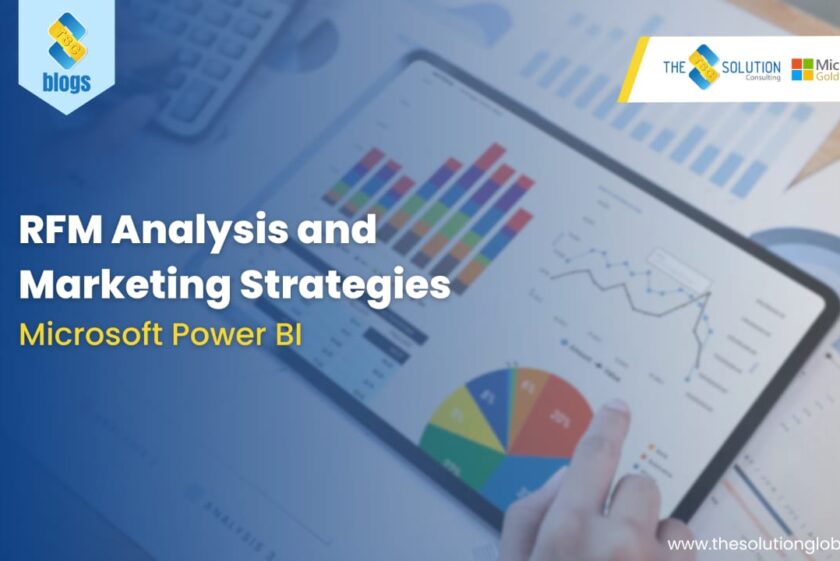
RFM Analysis and Marketing Strategies
RFM analysis with Microsoft Power BI
In today’s data-driven business landscape, Power BI stands out as a robust tool for visualizing and analyzing customer data. One of the most effective applications of Power BI is in conducting RFM analysis. RFM analysis is a data-driven customer segmentation technique that helps businesses understand and segment their customer base based on three key metrics: Recency, Frequency, and Monetary value. This method allows businesses to identify their most valuable customers, tailor marketing strategies, and improve customer retention.
- Recency (R): How recently a customer has made a purchase.
- Frequency (F): How often a customer makes a purchase.
- Monetary (M): How much money a customer spends on purchases.
By leveraging Power BI’s capabilities, businesses can seamlessly collect, clean and analyze transactional data to perform RFM analysis. Using RFM analysis, businesses can categorize customers into different segments, such as high-value customers, at-risk customers, and new customers. This categorization is crucial for developing targeted marketing strategies that cater to the needs and behaviours of different customer groups.
Business scenarios
RFM analysis can be applied in various business scenarios:
- E-commerce: An online retailer can use RFM analysis to identify loyal customers who make frequent purchases and spend significantly. Targeted email campaigns can be created to reward these customers with special offers or discounts.
- Subscription Services: A subscription-based service can use RFM analysis to identify customers who are at risk of churning. By identifying these customers early, the business can offer incentives to encourage renewal or re-engagement.
- Brick-and-Mortar Retail: Physical retail stores can utilize RFM analysis to segment their customers and personalize in-store experiences. For example, offering exclusive in-store events or early access to sales for high-value customers.
- Non-Profit Organizations: RFM analysis helps non-profits understand donor behaviour, enabling them to target campaigns effectively to donors who are most likely to contribute based on past donation patterns.
Prerequisite Setups
Before conducting RFM analysis, certain prerequisites need to be in place:
- Data Collection: Gather transactional data, including purchase dates, frequency of purchases, and monetary value of each transaction. This data can be collected from various sources like CRM systems, e-commerce platforms, and POS systems.
- Data Cleaning: Ensure that the data is clean and consistent. Remove duplicate entries, correct any inaccuracies, and standardize the format of dates and monetary values.
- Data Segmentation: Segment the data based on Recency, Frequency, and Monetary values. This involves calculating the recency of the last purchase, the total number of purchases, and the total monetary value spent by each customer.
- Scoring: Assign scores to each customer based on their recency, frequency, and monetary values. For instance, a scale of 1-5 can be used, where 1 represents the lowest value and 5 represents the highest.
Transactions flow
The flow of transactions in RFM analysis involves several steps:
- Data Extraction: Extract relevant transactional data from various sources.
- Data Preparation: Clean and preprocess the data to ensure accuracy and consistency.
- RFM Calculation:
- Recency: Calculate the number of days since the last purchase for each customer.
- Frequency: Count the total number of purchases made by each customer.
- Monetary: Sum the total amount spent by each customer.
- Scoring: Assign R, F, and M scores to each customer. For example, a customer who made a purchase within the last week might get an R score of 5, while a customer who made a purchase over a year ago might get an R score of 1.
- Segmentation: Combine the R, F, and M scores to segment customers into different categories. For instance, customers with high R, F, and M scores can be categorized as “Champions,” while those with low scores can be categorized as “At Risk.”
- Analysis and Strategy Development: Analyse the segments to develop targeted marketing strategies. This can include personalized email campaigns, loyalty programs, and special offers tailored to each customer segment.
Harness the Power of RFM Analysis for Tailored Marketing Success
RFM analysis offers businesses a potent method to comprehend their customer base and craft targeted marketing strategies. By categorizing customers according to their purchasing behaviors, companies can customize their marketing initiatives to address the unique needs of various customer segments. This approach not only boosts customer satisfaction and loyalty but also promotes revenue growth. While implementing RFM analysis involves meticulous data gathering, cleansing, and scoring, the insights derived are extremely beneficial for any business aiming to enhance its marketing tactics.



